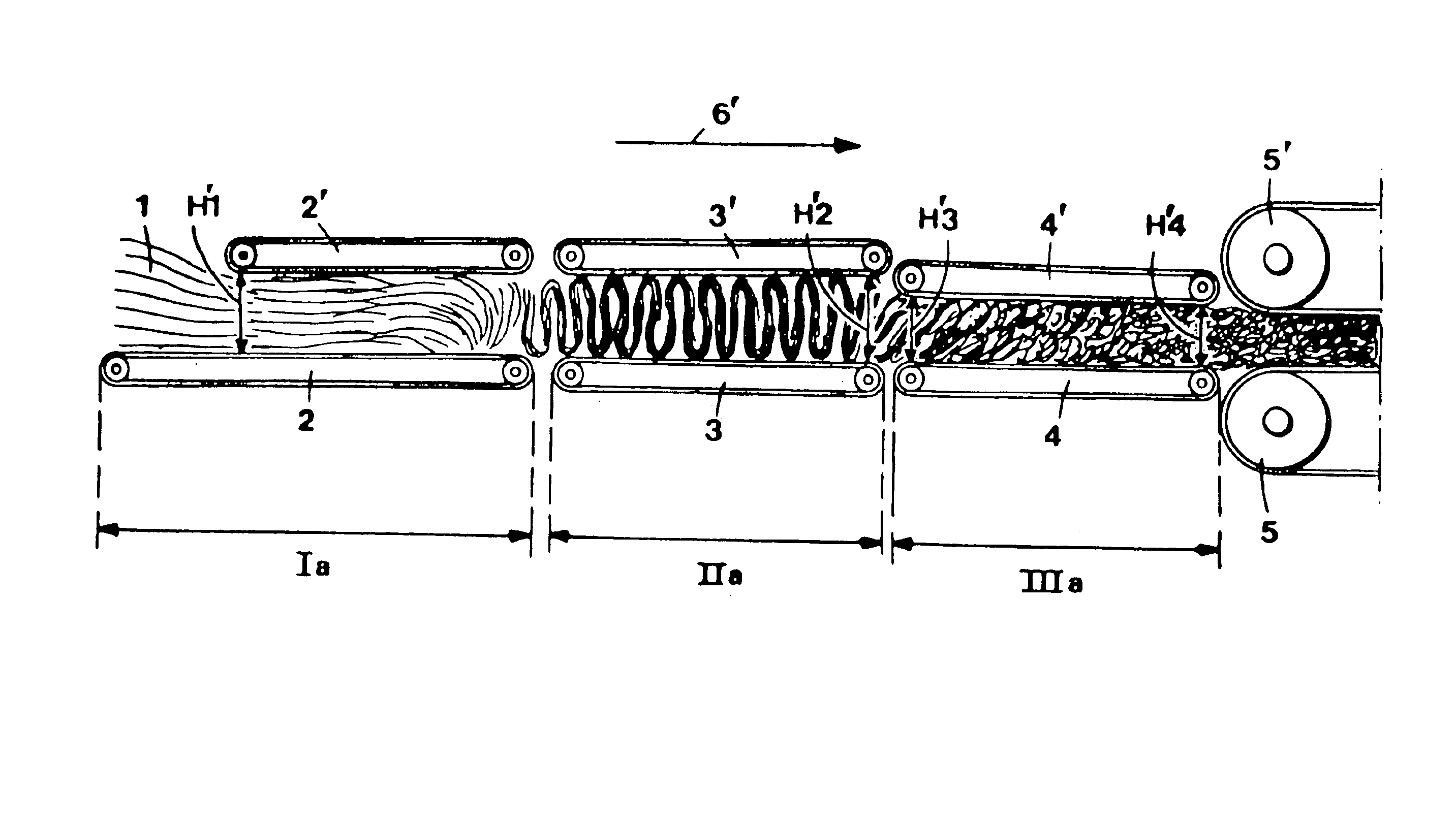Thermoinsulating mat of mineral fibers with random orientation
a mineral fiber and random orientation technology, applied in the direction of weaving, heat proofing, manufacturing tools, etc., can solve the problems of high density, insufficient flexibility for some applications, and high density of kg/m3 to achieve the effect of reducing the diameter of the fiber
- Summary
- Abstract
- Description
- Claims
- Application Information
AI Technical Summary
Benefits of technology
Problems solved by technology
Method used
Image
Examples
Embodiment Construction
Known mats of mineral fibers having a quasi-random orientation are formed from glass or rock fibers having a diameter of 6 to 14 micrometers and a length of several centimeters. According to the invention, the mat is formed by much finer mineral fibers having, for the great majority of them, an average diameter of 2.5 to 4.5 micrometers and a length of 2 to 15 cm.
How an insulating mat having the desired qualities indicated above can be produced with such a material will now be described.
In a conventional way, the felts of mineral fibers are continuously formed by placing on a conveyor fibers which are conveyed by gas streams. The conveyor holds the fibers and allows the gases to pass.
Before they are placed on the conveyor, the fibers are coated with a resinous composition intended to bind the fibers to one another, thus giving cohesiveness to the felt which is formed. The resinous composition, applied in liquid form, is crosslinked by a heat treatment performed on the felt previousl...
PUM
| Property | Measurement | Unit |
|---|---|---|
| length | aaaaa | aaaaa |
| diameter | aaaaa | aaaaa |
| diameter | aaaaa | aaaaa |
Abstract
Description
Claims
Application Information
 Login to View More
Login to View More - R&D
- Intellectual Property
- Life Sciences
- Materials
- Tech Scout
- Unparalleled Data Quality
- Higher Quality Content
- 60% Fewer Hallucinations
Browse by: Latest US Patents, China's latest patents, Technical Efficacy Thesaurus, Application Domain, Technology Topic, Popular Technical Reports.
© 2025 PatSnap. All rights reserved.Legal|Privacy policy|Modern Slavery Act Transparency Statement|Sitemap|About US| Contact US: help@patsnap.com



